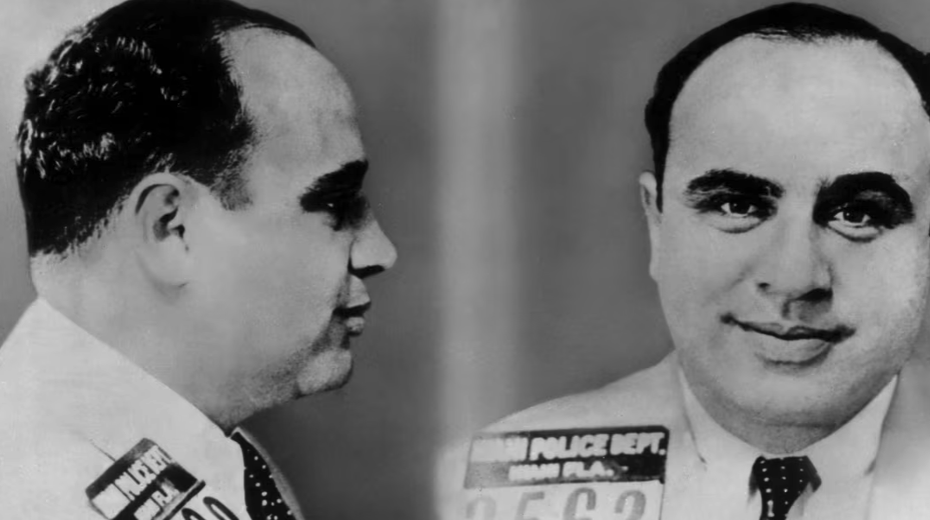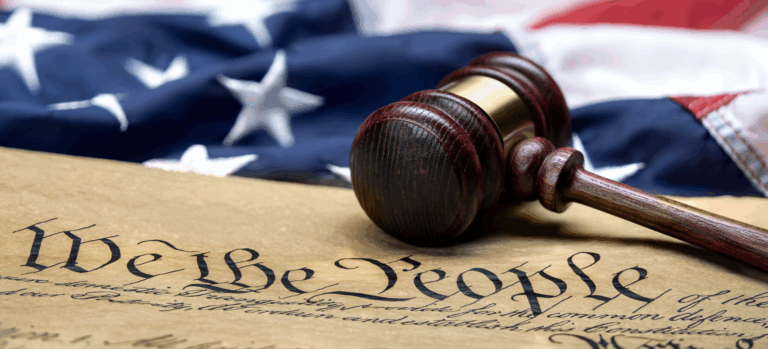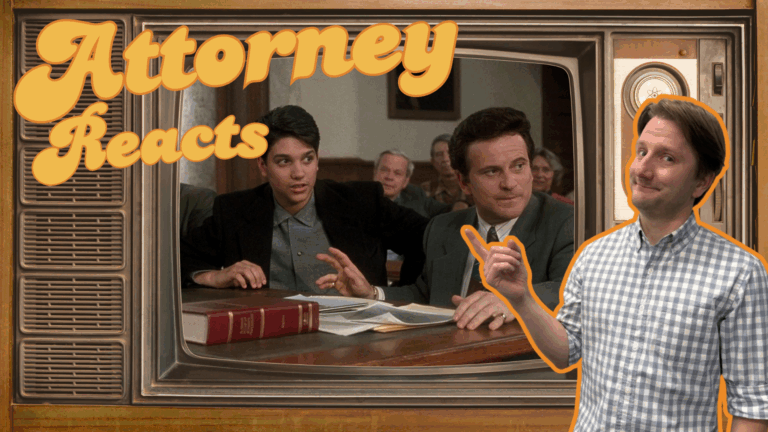Author: Shelby Benavidez
Contributing Attorney: Olivia Chapa, attorney
Some people may have never heard of “racketeering,” while others may think back to smoky backrooms, mob bosses plotting their next move, or splashy headlines about high-stakes trials. The term, however, carries a much deeper significance than its cinematic reputation suggests. At its heart, racketeering describes the machinery of organized crime – schemes designed not just to break the law once, but to do so repeatedly, as part of a larger enterprise.
RICO, the Racketeer Influenced and Corrupt Organizations Act, emerged as a powerful tool to confront that machinery. Passed in 1970, it gave prosecutors the reach to pursue the foot soldiers who carried out crimes, as well as the leaders and organizations pulling the strings. More than 50 years later, RICO continues to shape how the justice system dismantles criminal empires, from mafia families to sprawling financial frauds. Let’s break down what racketeering really means, how RICO laws work, and the impact they continue to have on crime and justice in America.
Understanding Racketeering and RICO
What Does Racketeering Mean in Criminal Law?
Racketeering is a broad legal term that refers to organized and ongoing illegal business activities. It typically involves a pattern of criminal acts committed to generate money or maintain power.
The word originated in the 1920s, when it was used to describe dishonest business schemes. For example, someone might create a “protection racket” where they demand payment from local businesses in exchange for not harming them. Over time, the term evolved to encompass different types of organized criminal activity.
Today, racketeering can include extortion, which is when someone forces another person to give up money or property through threats. It can also involve bribery, where money or favors are offered to influence decisions. Money laundering is another common example, in which illegal earnings are hidden or disguised to look legitimate. Finally, illegal gambling and loan sharking have historically been associated with racketeering as well.
In short, racketeering is not one single crime. Instead, it’s a collection of crimes tied together by the idea of running a criminal operation like a business.
Racketeering vs. RICO: What’s the Difference?
Racketeering and RICO are closely related, but they are not exactly the same. Racketeering refers to the criminal acts themselves, while RICO is the law that allows prosecutors to go after people and organizations engaged in racketeering.
Put simply, racketeering is the criminal activity itself, while RICO is the law designed to tackle it. The RICO Act gave federal prosecutors a powerful tool to go after organized crime in a new way. Rather than having to prove every single offense individually, they could demonstrate a pattern of racketeering tied to an “enterprise,” whether that was a gang, an organization, or even a seemingly legitimate business. This approach made it possible to hold leaders accountable, even when they never directly carried out the crimes themselves.
RICO Act Explained
RICO is short for the Racketeer Influenced and Corrupt Organizations Act. In plain English, it’s a law that allows the government to charge people or organizations who are running or benefiting from ongoing criminal activity.
The law requires proof of at least two acts of racketeering within a 10-year period, and those acts must be connected to an enterprise, such as a gang, crime family, business, or political group. Once this connection is shown, prosecutors can charge not only the people committing the crimes but also the leaders or organizations behind them.
The penalties for RICO violations are severe. Convictions can result in up to 20 years in prison per racketeering count, and in some cases, even life imprisonment. Defendants may also have to forfeit, or give up, money, property, or assets gained through illegal activity.
Key Details About RICO Laws
States That Enforce RICO Laws
While the federal government has its own RICO Act, some states also passed their own versions of RICO laws. These laws allow state prosecutors to bring charges similar to federal RICO cases. As of today, 33 states have specific RICO statutes.
Each state law is slightly different, but the general idea is the same: to target criminal organizations at the state level. For example, Georgia’s RICO law is often used in both traditional organized crime cases and in cases involving white-collar crimes, such as fraud.
What Are the 35 RICO Crimes of the RICO Act?
The federal RICO Act lists 35 crimes, sometimes called “predicate acts,” that can be used to prove a pattern of racketeering. These crimes are divided into two groups: 27 federal offenses and 8 state offenses.
Examples of these crimes include murder, kidnapping, bribery, extortion, drug trafficking, and counterfeiting. Fraud-related crimes, such as mail fraud and wire fraud, also qualify, as do financial offenses like money laundering and embezzlement. Other predicate acts include obstruction of justice and gambling offenses.
A RICO case doesn’t need all 35 crimes to apply – just two within a 10-year period that are connected to an enterprise. Still, the wide range of qualifying crimes shows how broad the law is. It can apply to violent street gangs, drug cartels, corrupt businesses, or even large-scale white-collar criminal schemes.
How Does Someone Get Charged Under RICO?
A RICO charge isn’t as straightforward as accusing someone of theft or assault. Prosecutors have to show more than a single act – they need to prove a pattern. That usually means at least two crimes within a ten-year span, tied together by an enterprise such as a gang, business, or other organization. On top of that, they must demonstrate that the person played a role in the enterprise, whether by committing the crimes directly, giving the orders, or reaping the rewards.
For example, if a gang leader orchestrates drug deals and violent attacks, RICO can reach them even if they never personally handled the drugs. Another example might be a business owner laundering money for a criminal enterprise – they can find themselves facing the same charges. Even politicians aren’t immune. If they were to accept bribes as part of a coordinated scheme, they could be prosecuted under RICO as well.
RICO Cases, Penalties, and Impact
Famous RICO Cases
Over the years, RICO has played a starring role in some of the nation’s most high-profile criminal cases. In the 1980s, it helped federal prosecutors take down leaders of New York’s major crime families, holding bosses accountable even when they hadn’t committed the crimes themselves. The law has also been used against violent street gangs like MS-13, where organizers of attacks faced the same scrutiny as those on the streets.
However, mob bosses and crime families aren’t the only ones at risk for RICO charges. This law has reached into the corporate world, targeting companies and executives involved in large-scale fraud, corruption, and financial misconduct.
The fact of the matter is, regardless of who is on the defense, the law’s reach has shown just how powerful a tool it can be.
Why RICO Charges Are So Serious
In the world of criminal law, RICO charges sit at the top tier, delivering punishments that reach far past the cell door. A conviction can strip away more than freedom – under forfeiture laws, the government can seize homes, businesses, and any money connected to the criminal enterprise.
Even being named in a RICO indictment can have serious consequences. Businesses may collapse, reputations may be destroyed, and legal costs can be enormous. For this reason, RICO charges are often used as leverage to pressure defendants into plea deals.
How RICO Laws Affect Businesses and Communities
Most people will never find themselves facing a RICO charge, yet the law’s reach can ripple through communities and the justice system in significant ways. It often strikes at violent gangs or drug networks, removing dangerous elements and helping make neighborhoods safer. At the same time, businesses caught up in fraud or corruption can be dismantled, protecting employees and consumers alike. But RICO’s broad scope has also sparked debate. Critics argue it can be stretched too far, sometimes even used in civil lawsuits where private parties go after organizations for damages, raising questions about how far the law should extend.
Key Takeaways
Racketeering and RICO may sound like dense legal jargon, but at their core the ideas are easy to grasp. Racketeering is simply the web of ongoing criminal activity, while RICO is the law designed to take down the people and organizations behind it. With dozens of qualifying crimes, penalties that reach decades into prison, and the power to dismantle entire enterprises, RICO still stands as one of the most formidable tools in American law enforcement.
From mafia bosses to corrupt companies, RICO has shaped the way America fights organized crime for over 50 years. While it may sound complicated at first, at its core, RICO is about one thing: making sure criminal enterprises are held accountable.




